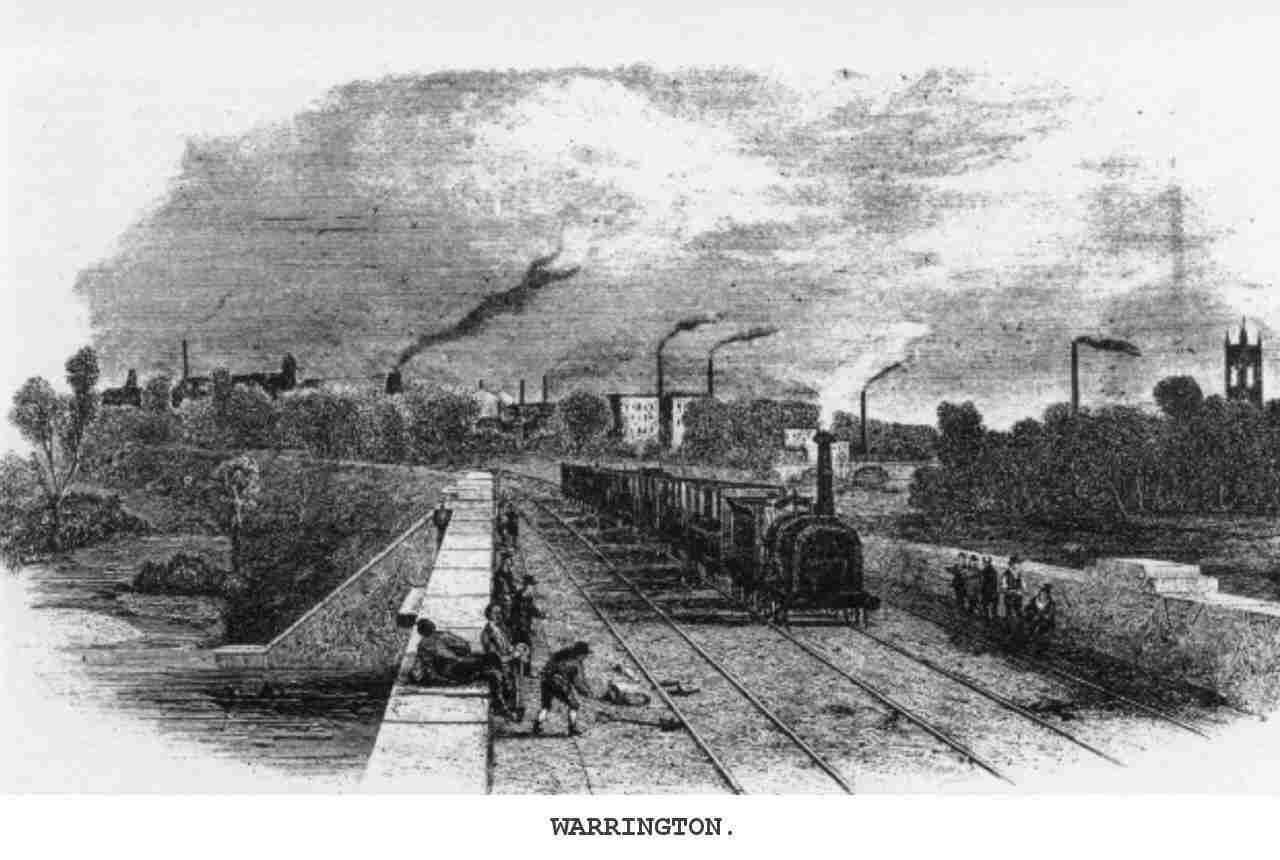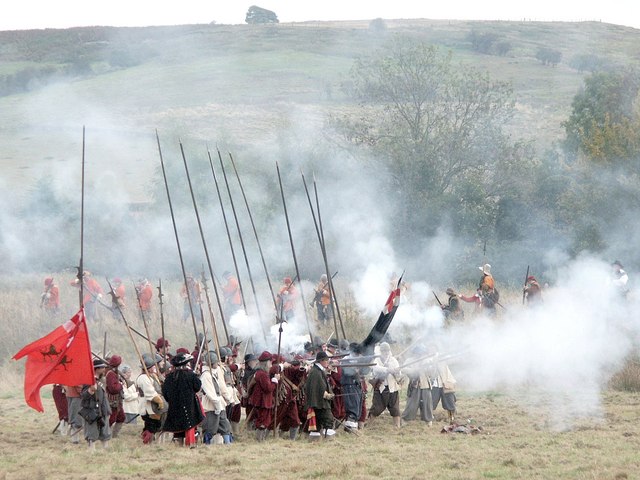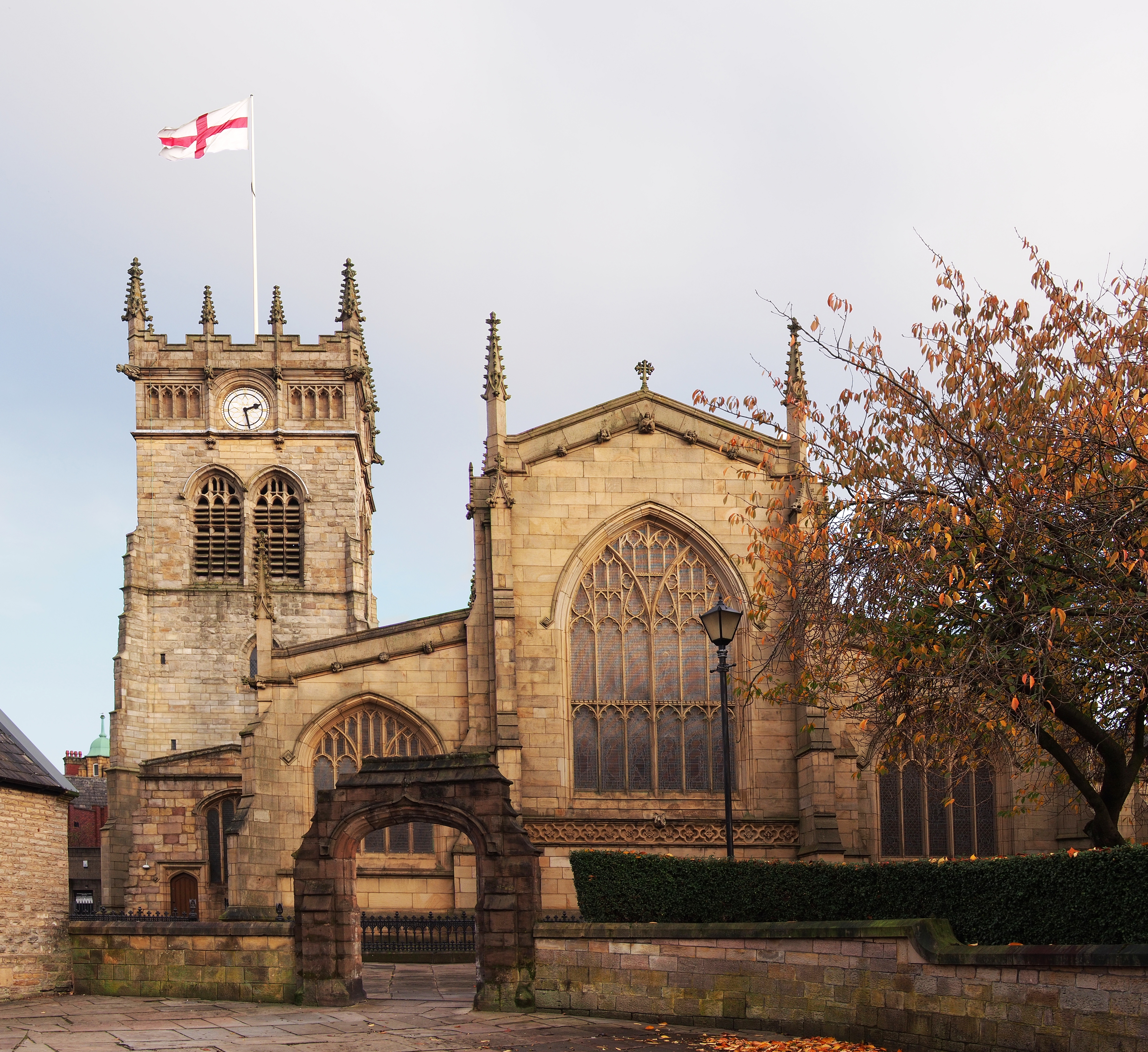|
Battle Of Preston (1648)
The battle of Preston was fought on 17 August 1648 during the Second English Civil War. A Roundhead, Parliamentarian army commanded by Lieutenant-general (United Kingdom), Lieutenant General Oliver Cromwell attacked a considerably larger force of Cavalier, Royalists under James Hamilton, 1st Duke of Hamilton, James Hamilton, Duke of Hamilton, near the Lancashire town of Preston, Lancashire, Preston; the Royalists were defeated with heavy losses. The First English Civil War between Royalist supporters of Charles I of England, Charles I and an alliance of Parliamentarian and Scottish forces ended in 1646 with Charles defeated and imprisoned. He continued to negotiate with several factions among his opponents and this sparked the Second English Civil War in 1648. It began with a series of Mutiny, mutinies and Royalist Rebellion, uprisings in England and Wales. Meanwhile, a political struggle in Scotland led to a faction which supported Charles, known as the Engagers, gaining power. ... [...More Info...] [...Related Items...] OR: [Wikipedia] [Google] [Baidu] |
Second English Civil War
The Second English Civil War took place between February and August 1648 in Kingdom of England, England and Wales. It forms part of the series of conflicts known collectively as the 1639–1653 Wars of the Three Kingdoms, which include the 1641–1653 Irish Confederate Wars, the 1639–1640 Bishops' Wars, and the 1649–1653 Cromwellian conquest of Ireland. Following his defeat in the First English Civil War, in May 1646 Charles I of England, Charles I surrendered to the Scots Covenanters, rather than Parliament of England, Parliament. By doing so, he hoped to exploit divisions between English and Scots Presbyterian polity, Presbyterians, and English Independent (religion), Independents. At this stage, all parties expected Charles to continue as king, which combined with their internal divisions, allowed him to refuse significant concessions. When the Presbyterian majority in Parliament failed to disband the New Model Army in late 1647, many joined with the Scottish Engagers in ... [...More Info...] [...Related Items...] OR: [Wikipedia] [Google] [Baidu] |
Scottish Invasion Of England (1648)
A Scottish invasion of England took place near Carlisle on 8 July 1648 as part of the Second English Civil War. The First English Civil War between Royalist supporters of Charles I and an alliance of Parliamentarian and Scottish forces had ended in 1646 with Charles defeated and imprisoned. He continued to negotiate with several factions among his opponents and this sparked the Second English Civil War in 1648. It began with a series of mutinies and Royalist uprisings in England and Wales. A Scottish faction which supported Charles, known as the Engagers, raised an army under the command of James Hamilton, Duke of Hamilton. This marched south to support the uprisings; crossing into England it combined with English Royalists under Marmaduke Langdale and continued along the west coast road some 24,000 strong. Much smaller Parliamentarian forces commanded by Major General John Lambert fell back in front of it. Lieutenant General Oliver Cromwell concentrated 9,000 men in no ... [...More Info...] [...Related Items...] OR: [Wikipedia] [Google] [Baidu] |
Cavalry
Historically, cavalry (from the French word ''cavalerie'', itself derived from ''cheval'' meaning "horse") are groups of soldiers or warriors who Horses in warfare, fight mounted on horseback. Until the 20th century, cavalry were the most mobile of the combat arms, operating as light cavalry in the roles of reconnaissance, Screening (tactical), screening, and skirmisher, skirmishing, or as heavy cavalry for decisive economy of force and shock attacks. An individual soldier in the cavalry is known by a number of designations depending on era and tactics, such as a cavalryman, Equestrianism, horseman, trooper (rank), trooper, cataphract, knight, Drabant Corps of Charles XII, drabant, hussar, uhlan, mamluk, cuirassier, lancer, dragoon, samurai or horse archer. The designation of ''cavalry'' was not usually given to any Military animal, military forces that used other animals or platforms for mounts, such as chariots, Camel cavalry, camels or War elephant, elephants. Infantry who m ... [...More Info...] [...Related Items...] OR: [Wikipedia] [Google] [Baidu] |
Warrington
Warrington () is an industrial town in the Borough of Warrington, borough of the same name in Cheshire, England. The town sits on the banks of the River Mersey and was Historic counties of England, historically part of Lancashire. It is east of Liverpool and the same distance west of Manchester. The population in 2021 was recorded as 174,970 for the built-up area and 210,900 for the wider borough, the latter being more than double that of 1968 when it became a New towns in the United Kingdom, new town. Warrington is the largest town in the ceremonial county of Cheshire. Warrington was founded by the Roman Britain, Romans at an important crossing place on the River Mersey. A new settlement was established by the Saxons, Saxon Wærings. By the Middle Ages, Warrington had emerged as a market town at the lowest bridging point of the river. A local tradition of textile and tool production dates from this time. The expansion and urbanisation of Warrington coincided with the Industr ... [...More Info...] [...Related Items...] OR: [Wikipedia] [Google] [Baidu] |
Winwick, Cheshire
Winwick is a village and Civil parishes in England, civil parish in the Borough of Warrington, Cheshire, England. Located within the Historic counties of England, historic boundaries of Lancashire, it is situated about three miles north of Warrington town centre, nearby is junction 22 of the M6 motorway, M6 and Junction 9 of the M62 motorway, M62. Winwick also borders Newton-le-Willows and Burtonwood. According to the United Kingdom Census 2001, 2001 Census, the civil parish had a population of 4,366. History Oswald of Northumbria, King Oswald of Northumbria is believed to have been killed in the Winwick area and the St Oswald's Church, Winwick, parish church, dedicated to him, was reputedly located with guidance from the "Winwick Pig", a carving of which can still be seen on the church wall. Richard Sherlock (clergyman), Richard Sherlock was the incumbent at Winwick for some thirty years in the seventeenth century, and Thomas Wilson (bishop), Thomas Wilson, Bishop of Sodor and ... [...More Info...] [...Related Items...] OR: [Wikipedia] [Google] [Baidu] |
Battle Of Winwick
The Battle of Winwick (also known as the Battle of Red Bank) was fought on 19 August 1648 near the Lancashire village of Winwick between part of a Royalist army under Lieutenant General William Baillie and a Parliamentarian army commanded by Lieutenant General Oliver Cromwell. The Royalists were defeated with all of those who took part in the fighting, their army's entire infantry force, either killed or captured. The Royalist mounted component fled but surrendered five days after the battle. Winwick was the last battle of the Second English Civil War. The First English Civil War between Royalist supporters of Charles I and an alliance of Parliamentarian and Scottish forces ended in 1646 with Charles defeated and a prisoner. He continued to negotiate with several factions among his opponents and this sparked the Second English Civil War in 1648: a series of mutinies and Royalist uprisings in England and Wales, and a Scottish Royalist invasion of north-west England. The ... [...More Info...] [...Related Items...] OR: [Wikipedia] [Google] [Baidu] |
Wigan
Wigan ( ) is a town in Greater Manchester, England. The town is midway between the two cities of Manchester, to the south-east, and Liverpool, to the south-west. It is the largest settlement in the Metropolitan Borough of Wigan and is its administrative centre. The town has a population of 107,732 and the wider borough of 330,714. Wigan is part of the Historic counties of England, historic county of Lancashire. Wigan was in the territory of the Brigantes, an ancient List of ancient Celtic peoples and tribes, Celtic tribe that ruled much of what is now Northern England. The Brigantes were subjugated in the Roman conquest of Britain and the Roman settlement of was established where Wigan lies. Wigan was incorporated as a Borough status in the United Kingdom, borough in 1246, following the issue of a charter by Henry III of England, King Henry III of England. At the end of the Middle Ages, it was one of four boroughs in Lancashire established by royal charter. The Industrial Re ... [...More Info...] [...Related Items...] OR: [Wikipedia] [Google] [Baidu] |
River Ribble
The River Ribble runs through North Yorkshire and Lancashire in Northern England. It starts close to the Ribblehead Viaduct in North Yorkshire, and is one of the few that start in the Yorkshire Dales and flow westwards towards the Irish Sea (the Dee in Dentdale and the Twiss in Kingsdale being notable others). Etymology The name ''Ribble'' may be a Brittonic compound-formation. The second element is the noun ''*pol'', with connotations including "puddle, pond, upland-stream" ( Welsh ''pwll''). The first is ''rö-'', an intensive prefix, with nouns meaning "great" (Welsh ''rhy-'', Cornish re-). Ribble may once have been known as ''*Bremetonā-'', underlying the name ''Bremetenacum'', the Roman fort at Ribchester. Involved here is the Brittonic root ''*breμ–'', meaning "roaring" (cf. Welsh ''brefu''), as observed at the river-names Breamish in Northumberland, Braan in Scotland and Brefi in Wales. History Neolithic to Saxon finds from along the River Ribble during th ... [...More Info...] [...Related Items...] OR: [Wikipedia] [Google] [Baidu] |
Rout
A rout is a Panic, panicked, disorderly and Military discipline, undisciplined withdrawal (military), retreat of troops from a battlefield, following a collapse in a given unit's discipline, command authority, unit cohesion and combat morale (''esprit de corps''). History Historically, lightly equipped soldiers such as light cavalry, auxiliaries, partisan (military), partisans or militia were important when pursuing a fast-moving, defeated enemy force and could often keep up the pursuit into the following day, causing the routed army heavy casualties or total dissolution. The slower-moving heavy forces could then either seize objectives or pursue at leisure. However, with the advent of armoured warfare and ''blitzkrieg'' style operations, an enemy army could be kept more or less in a routed or disorganized state for days or weeks on end. In modern times, a routed formation will often cause a complete breakdown in the entire front, enabling the organized foe to attain a quick ... [...More Info...] [...Related Items...] OR: [Wikipedia] [Google] [Baidu] |
Flanking Maneuver
In military tactics, a flanking maneuver is a movement of an armed force around an enemy force's side, or flank, to achieve an advantageous position over it. Flanking is useful because a force's fighting strength is typically concentrated in its front, therefore, to circumvent an opposing force's front and attack its flank is to concentrate one's own offense in the area where the enemy is least able to concentrate defense. Flanking can also occur at the operational and strategic levels of warfare. Tactical flanking The flanking maneuver is a basic military tactic with several variations. Flanking an enemy entails attacking from one or more sides, at an angle to the enemy's direction of engagement. There are three standard flanking maneuvers. The first maneuver is the ambush, where a unit performs a surprise attack from a concealed position. Units friendly to the ambushing unit may be hidden to the sides of the ambush site to surround the enemy, but care must be taken ... [...More Info...] [...Related Items...] OR: [Wikipedia] [Google] [Baidu] |
New Model Army
The New Model Army or New Modelled Army was a standing army formed in 1645 by the Parliamentarians during the First English Civil War, then disbanded after the Stuart Restoration in 1660. It differed from other armies employed in the 1639 to 1653 Wars of the Three Kingdoms in that members were liable for service anywhere in the country, rather than being limited to a single area or garrison. To establish a professional officer corps, the army's leaders were prohibited from having seats in either the House of Lords or House of Commons. This was to encourage their separation from the political or religious factions among the Parliamentarians. The New Model Army was raised partly from among veteran soldiers who already had deeply held Puritan religious beliefs, and partly from conscripts who brought with them many commonly held beliefs about religion or society. Many of its common soldiers therefore held dissenting or radical views unique among English armies. Although the Ar ... [...More Info...] [...Related Items...] OR: [Wikipedia] [Google] [Baidu] |
Infantry
Infantry, or infantryman are a type of soldier who specialize in ground combat, typically fighting dismounted. Historically the term was used to describe foot soldiers, i.e. those who march and fight on foot. In modern usage, the term broadly encompasses a wide variety of subspecialties, including light infantry, irregular infantry, heavy infantry, mountain infantry, motorized infantry, mechanized infantry, Airborne forces, airborne infantry, Air assault, air assault infantry, and Marines, naval infantry. Other subtypes of infantry, such as line infantry and mounted infantry, were once commonplace but fell out of favor in the 1800s with the invention of more accurate and powerful weapons. Etymology and terminology In English, use of the term ''infantry'' began about the 1570s, describing soldiers who march and fight on foot. The word derives from Middle French , from older Italian (also Spanish) ''infanteria'' (foot soldiers too inexperienced for cavalry), from Latin '' ... [...More Info...] [...Related Items...] OR: [Wikipedia] [Google] [Baidu] |









